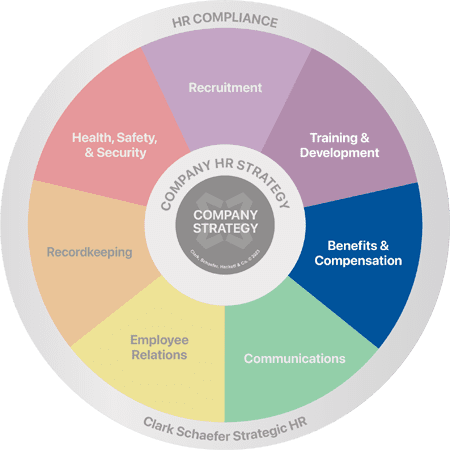Systemic Racism: How Can I Fight It?
Last Updated on November 15, 2021 / HR Strategy
HR Question:
The longstanding systemic racism and racial injustice against Black Americans is causing turmoil in my community – with my friends, with my family, and with my coworkers. What can my organization do to activate solutions to promote progress against systemic racism? How can I be a part of the solution through my workplace during these tough times?
HR Answer:
It is no secret that our nation has been rocked by heartbreak, by demands for change, and protests within our cities. As communities nationwide have processed and protested the tragic deaths of George Floyd, Breonna Taylor, Ahmaud Arbery, and more, we have seen a swell of companies speaking out against the social injustice that we operate in as a country. While these injustices are rooted as far back as 1619, if not further, we believe there is hope. Corporate America has the ability to have significant impact on improving and changing our landscape which has been sculpted, in part, by systemic racism. Now, more than ever before, it is the time to be aware of our sphere of influence to expedite action to correct misinformation and systems that do not support inclusion and belonging of Black Americans – and to do so at a faster pace than we have in the past. How do we get started?
In her Ted Talk, “Color Blind or Color Brave”, Mellody Hobson addresses the need to speak openly about race and impresses the importance of diversity in hiring. In fact, she points out that the most successful companies are the ones who make an active effort in recognizing all races, by being color-brave, not color-blind. Inspired by Mellody’s Ted Talk, we have compiled internally- and externally-focused color-brave actions that employers and individuals can take and lead, research, ask about, and/or be involved with for positive change.
Internally:
- Ensure inclusive leadership with accountability for progress on Diversity & Inclusion efforts. Leadership, management, and HR set the boundaries and example for respect and equity in the workplace. The first question to ask as leaders: are we having the difficult conversations with employees? Do we need to start having those conversations? And how do we do so? The first step in this may be embracing Crucial Conversations – but if there are only a handful of questions that we can answer, here are a few:
- Are we creating opportunities or forums for employees to dialogue about pressing social concerns?
- Are we providing the tools and training to have crucial conversations?
- Are we listening to everyone’s voice?
- Do we have the right policies in place?
- Are we communicating with compassion and focusing on human connection with our team?
- Create opportunity for self-reflection and development. We all have biases – conscious and unconscious. Provide exercises for self-evaluation and training programs (like cultural competency, unconscious bias, and respectful workplace training) to help determine personal strengths and opportunities. Bravely be willing to dialogue with others about this topic. Some good practical guidelines are: admit vulnerability and that you may say or do something that is contradictory to your intentions; be open to any feedback or comments; seek to understand instead of seeking to be understood; listen in an effort to learn another point of view and withhold judgments; and express respect and professionalism.
- Evaluate equity in the talent lifecycle. Ensure equal opportunity through measurable targets in talent attraction, talent engagement, and talent development efforts. Some examples of best practices include creating a network of sources to recruit a diverse candidate pool and have metrics around the “funnel” effectiveness throughout the hiring process; having mentoring and sponsorships for minority talent; creating metrics for retention and promotion of minorities; and ensuring individual development plans are in place and being implemented.
- Support a culture of openness and belonging with psychological safety. Tackle microaggressions that may exist in the workplace – or maybe define microaggressions in the first place. Have assessments in place to assess and reward each other as you live the standards/values. Create a welcoming environment free of posturing and aggressive competitiveness, where team members are comfortable being who they are and feel valued through a sense of psychological safety.
- Create ongoing feedback loops through focus groups (i.e. ERG’s or general) and surveys. This provides the ability to stay on track with goals and keep a finger on the pulse of what’s happening internally specifically related to inclusive practices. During emotionally charged times like these, it’s important to connect with team members quickly and create opportunities to share thoughts and feelings as soon as possible and on a regular basis. Then, create action planning and implementation of initiatives/changes.
Externally:
- Advocate for legislative changes and support political candidates for office that support advancement of pro-minority agendas.
- Assess Corporate Social Responsibility policies and practices. If none, create them. Ensure supplier diversity targets are measured and evaluated.
- Donate to funds and organizations that support the black community and social justice. Examples might include: Chambers, Foundations, United Way, and Minority business start-up ecosystem.
- Donate time and intellectual capital to support actionable solutions in the community.
- Create ongoing feedback loops with customers, partnerships, and suppliers to assess needs and experiences with the organization.
By being color-brave rather than color-blind, organizations and corporations can activate and mobilize change in communities, workplaces, and beyond to bring an end to systemic racism.
HR Strategy in Diversity & Inclusion will impact the bottom line for your business. After all, the employee experience, supplier/partner experience, and customer experience impact the bottom line. It’s more important than ever to optimize your inclusion practices during the global health pandemic and racial turmoil. Strategic HR receives numerous requests regarding diversity and inclusion strategies. We can help. For more information, please visit our HR Strategy pages.






